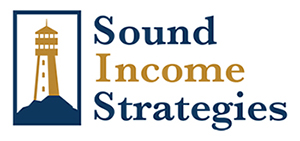[media-downloader media_id=”4003″ texts=”Download PDF” class=”cherry-btn”]
| Index | Month | YTD |
| Dow Jones | +2.56% | +14.00% |
| S&P 500 | +3.93% | +17.51% |
| NASDAQ | +4.74% | +22.01% |
| Barclay’s Agg | +0.26% | +2.96% |
10-Yr Treasury yield was 2.414% at the end of March and 2.509% at the end of April.
Markets
In last month’s newsletter, I mentioned that the recent flattening of the yield curve might actually boost the stock market in the short-term. So far, that’s proving to be true. The S&P 500 hit a new record high in April, and for the first time this year the Dow Jones Industrial Average spent an entire month over 26,000.* Some of this growth can be attributed to more good economic news coming out last month, including strong earnings reports for many companies and an early first-quarter GDP figure of 3.2%. However, I believe the yield curve issue is another key driver.
As I explained last month, the yield curve flattened in March after a misguided move by the Federal Reserve. On the same day the Fed announced it will not approve more short-term interest rate hikes this year, it also announced plans to discontinue the unwinding of quantitative easing by September. Within a week of the announcement, the yield on the 10-Year Treasury rate dropped all the way to 2.39%, well below the Fed’s current benchmark short-term rate of 2.5%. The 10-Year briefly got back to 2.6% in April, but has otherwise remained in the 2.5% range ever since the Fed’s announcement, keeping the yield curve flat or nearly flat.**
While I believe this situation could easily trigger the next recession and major market correction by next year, in the meantime, the stalled low-interest rate environment is forcing many everyday investors up the risk curve and into the stock market. It’s also compelling corporations to continue increasing their use of stock buybacks. I believe both these situations are driving the stock market’s recent gains as much as (if not more than) any strong new economic data, and that they may help expand the equity bubble even further in the months ahead.
By 2020, however, if the flat yield curve persists (as I believe it will), it may quickly go from being a classic symptom of a recession and market correction to being the main cause. As I’ve said before: this feels a lot like 2007 all over again. Back then, we knew about the sub-prime
mortgage crisis as early as February, but it took until November for the stock market to really take notice and start dropping. I believe a similar situation may play out with the flat yield curve.
Portfolio Transactions:
When managing your portfolio at SIS, we look for one of four possible “enhancement” trades while reviewing securities and possible transactions. Income generation is our primary goal for our clients, and we consider the following four portfolio enhancements before transacting: current yield, yield to worst (minimum projected annualized total return), interest rate risk, and default risk. The intents of these transactions are categorized as follows:
- Pay Me Now – Enhancing current yield
- Pay Me Later – Enhancing yield to worst
- Cover My Assets I. – Managing interest rate risk
- Cover My Assets II. – Managing default risk
We evaluate the transactions by determining whether they meet one, two, three, or all four enhancements. A baseball analogy for this: SINGLES, DOUBLES, TRIPLES, and HOME RUNS.
Sold SCE-G Preferred (Ba1)
Bought DUK-A Preferred (Baa1)
This trade was a credit upgrade, as Duke Energy (DUK-A) is a safer name.
*MarketWatch.com
**YCharts.com
*Note: The above trades were recent block trades and do not reflect all trades done on an individual specific basis. Sound Income Strategies, LLC is a registered investment advisor. Information presented is for educational purposes only and does not intend to make an offer or solicitation for the sale or purchase of any specific securities, investments, or investment strategies. Investments involve risk and, unless otherwise stated, are not guaranteed. Past performance is not an indication of future results. Be sure to first consult with a qualified financial advisor or tax professional about your specific financial situation before implementing any strategy discussed herein.You are advised to give independent consideration to, and conduct independent investigation with regards to, the information above in accordance with your individual investment objectives. Use of the Information is at the reader’s risk, is strictly intended for informational purposes in conjunction with the recipient’s due diligence, and should not be construed as a solicitation by Sound Income Strategies, LLC. Past performance will never indicate or guarantee future behavior. Sound Income Strategies, LLC does not represent or warrant that the contents of the document are suitable for you from compliance, regulatory, legal, or any other perspective. We shall have no responsibility or liability for your use or non-use of the document or any portion thereof. Sound Income Strategies, LLC is registered as an investment advisor under the Investment Advisors Act of 1940 and is regulated by the SEC. Sound Income Strategies, LLC and its affiliates may only transact business or render personalized investment advice in those states and jurisdictions where we are registered or otherwise qualified to do so.
